Executives often ask: “What does a successful software application strategy look like?”
The short answer isn’t “pick better tools.” A winning strategy is a framework that ensures every application serves a clear business purpose, scales with growth and strengthens security. For mid-size companies, that framework rests on five critical building blocks: discovery, rationalization, integration, governance and future-proofing.
1. Discovery: Know What You Have Before You Improve It
You can’t manage what you can’t see. Discovery builds complete visibility into your software environment — not just a list of major platforms but every application in use: the CRM in sales, the ERP in operations, HR systems, collaboration tools, departmental apps bought on credit cards and free trials employees sign up for.
A useful discovery process captures each app’s name and purpose, department owner, active users and adoption rates, licensing costs and contract terms, security posture and vendor reliability. For many leaders, this inventory is the first time they see the full scope of their estate, often revealing unused tools, redundancies and risky applications operating under the radar.
2. Rationalization: Cut the Fat, Keep the Value
Once inventory is complete, rationalization decides what stays, what goes and what can be consolidated. This step is about simplification as much as savings: every removed app reduces complexity, lowers training time and simplifies IT support.
Key questions to ask:
– Does this application align with business objectives?
– Is it redundant with another tool?
– Are we using it enough to justify the cost?
– Can multiple tools be replaced by one platform?
3. Integration: Break Down Silos and Unlock Productivity
Even strong applications lose value if they operate in isolation. Integration makes tools work together, sharing data and automating workflows so employees stop re-entering information or juggling systems. Integrated environments provide a single source of truth, enabling faster, data-driven decisions and reducing time wasted on reconciliation.
4. Governance: Create Discipline and Standards
Without governance, environments slip back into chaos. Governance sets rules and processes such as centralized approval for new software, policies on licensing and renewals, security and compliance reviews for each application, and regular audits to ensure standards are followed.
Governance also drives accountability: instead of departments buying tools in isolation, the organization follows a structured process aligned with business goals and risk tolerance.
5. Future-Proofing: Build for Tomorrow
A strong application strategy solves today’s problems and anticipates tomorrow’s growth. Future-proofing means choosing systems that can adapt and scale with the company to avoid costly, disruptive overhauls.
Look for tools and vendors that:
– Scale as headcount and customer volumes grow
– Maintain clear product roadmaps and reliable support
– Support evolving compliance requirements and data privacy laws
Why Companies Struggle Without This Framework—and What They Gain with It
Without a deliberate framework, mid-size companies fall into familiar traps: overspending on overlapping applications, fragmentation as teams use different tools for the same process, reactive IT firefighting and increased risk from unvetted apps.
When the five building blocks are in place, companies see measurable benefits: lower costs through eliminated redundancies and smarter licensing, higher productivity from fewer fragmented workflows, stronger security through disciplined governance, greater scalability and better decision-making from integrated data and real-time visibility.
Cytranet’s Role in Guiding Every Step of the Journey
If your software environment feels fragmented, costly or hard to scale, you’re not alone. Cytranet helps mid-size companies build and sustain a practical application framework. Our Fractional CIOs partner with leadership to implement discovery, rationalization, integration, governance and future-proofing so your software estate becomes leaner, more secure and ready to grow.
Request a consultation now, and check out our next blog on how to rationalize and optimize your software stack.


